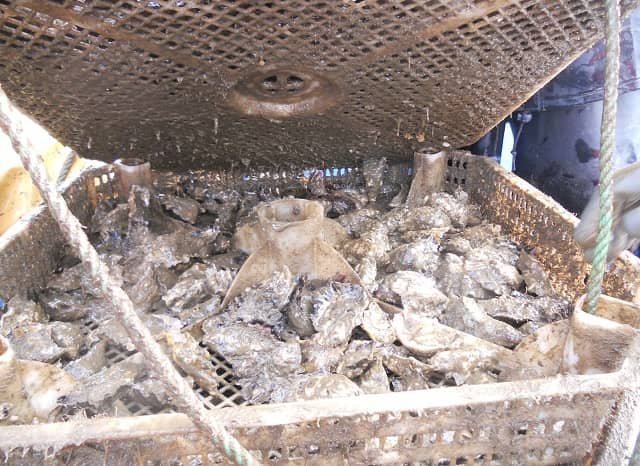
Bivalve farming has been promoted as a potential solution to climate change due to its perceived ability to capture carbon dioxide (CO2). However, recent scientific research has debunked this notion.
Traditionally, bivalve aquaculture was considered a source of CO2, mainly due to the respiration of the organisms and the formation of shells (calcification). However, a growing interest in carbon markets has sparked debates about its possible role as carbon sinks.
A comprehensive scientific review of the evidence, published by researchers from the Université de Brest, Sorbonne Université, University of Gothenburg, and the International Atomic Energy Agency, reveals a different story. Contrary to popular belief, bivalve farming does not contribute to CO2 capture. This misconception stems from flawed carbon budget models that oversimplify the complex chemistry of seawater.
The Carbon Cycle and Bivalve Shells
The carbon found in bivalve shells primarily comes from bicarbonate ions present in seawater. While these ions ultimately originate from atmospheric CO2 through a geological process, their conversion into shell material does not lead to a rapid offset of atmospheric CO2. On the contrary, the process of shell formation releases CO2 into seawater, hindering the ocean’s ability to absorb CO2 from the atmosphere.
Moreover, ecosystem-based carbon balance models often rely on assumptions and uncertain estimates. To accurately assess the carbon impact of bivalve farming, rigorous field measurements are essential. Until there is concrete evidence supporting the claim of CO2 absorption, including bivalve farming in carbon markets would be premature and potentially misleading.
The Need for Rigorous Scientific Research
Some proponents of bivalve farming as a carbon solution argue that examining the entire bivalve farming ecosystem might alter the perspective. However, concrete evidence supporting this claim is currently lacking. Most ecosystem-based carbon balance models rely on assumptions and estimates that require rigorous validation through field measurements.
To move towards a scientific consensus on the role of bivalve farming in carbon sequestration, several fundamental steps must be taken:
- Enhanced Measurement-Based Studies: Conduct thorough field research to accurately measure CO2 flows in shellfish ecosystems.
- Integration of Models and Observations: Combine carbon balance models with real-world data to refine our understanding.
- Interdisciplinary Collaboration: Foster cooperation among scientists from diverse fields to address the complexities of the issue.
Conclusion
While bivalve farming offers numerous environmental benefits and is a cornerstone of sustainable aquaculture, its contribution to carbon capture remains unproven. The scientific evidence is clear: bivalve farming is not a viable solution for mitigating climate change through carbon sequestration.
Key Findings of the Study:
- Bivalves are Carbon Sources, Not Sinks: The shell-building process releases CO2 into the ocean, counteracting the ocean’s ability to absorb atmospheric CO2.
- Misconceptions about Carbon Sources: The carbon used to build shells comes primarily from bicarbonate ions in seawater, not directly from atmospheric CO2.
- Limited Evidence of Carbon Sequestration: Studies supporting the idea that shellfish farming captures carbon are scarce and often based on flawed models.
- Importance of Field Research: More real-world data is needed to accurately assess the carbon footprint of shellfish farming.
- Shell Management Matters: How we manage shells after harvest significantly impacts CO2 emissions. Returning them to the ocean can help offset some emissions.
- Bivalve Farming Offers Other Benefits: Despite not being a carbon sink, shellfish farming provides valuable ecosystem services, such as water filtration and habitat creation.
It is crucial to base policies and practices on accurate scientific information. While bivalve farming is an important part of sustainable aquaculture, it is essential to recognize its limitations in terms of carbon capture and focus on other strategies to combat climate change.
In essence, while bivalve farming is valuable for several reasons, it is not a miracle solution for climate change.
Contact
Frédéric Gazeau
Sorbonne Université, CNRS, Laboratoire d’Océanographie de Villefranche
F-06230 Villefranche-sur-Mer, France.
Email: frederic.gazeau@imev-mer.fr
Reference (open access)
Pernet, F., Dupont, S., Gattuso, P., Metian, M., & Gazeau, F. Cracking the myth: Bivalve farming is not a CO2 sink. Reviews in Aquaculture. https://doi.org/10.1111/raq.12954

